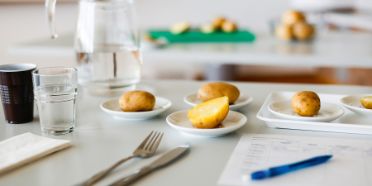Expertise and infrastructure
Microbiological and molecular biological methods
-
Traditional microbiological methods for the detection of different microorganism groups
-
Various assays to determine the inhibitory effect of selected microorganisms (e.g. on mycelial growth, which results from the germination of mould spores)
-
Identification using modern molecular biology methods (in-house and externally, qPCR, etc.)
-
MALDI-TOF mass spectrometry (in collaboration with Agroscope)
-
Biolog characterisation of substrate use in lactic acid bacteria (in collaboration with Agroscope)
-
Clarification of QPS status (e.g. antibiotic resistance, virulence or production of biogenic amines)
Physicochemical methods
- HPLC UV/RID to identify sugars and organic acids, vitamins formed, etc.
- Verification and quantification of composition (proteins, fats, carbohydrates, micronutrients) and structure (consistency, elasticity, viscosity)
- Rheometry
- Selective photometric determination


















